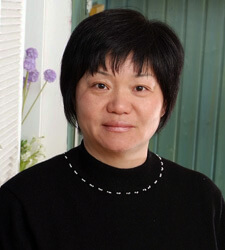Climb Higher with Expert College Admissions Guidance
Hi, I'm Wan Qiu Chen (陈婉秋), founder of IvyClimbing Education Services. I provide personalized college admissions counseling to help students craft compelling applications, personalize their essays, and navigate the ever-changing admissions landscape with confidence. Whether you're aiming for the Ivy League, top public universities, or specialized programs, I offer tailored strategies to highlight your unique strengths and maximize your chances of success. Let’s work together to turn your college dreams into reality!
Here Is A Bit About Me
Three words that describe me:
- Creative/Free Spirit – Ideas just flow out of me. And there is more, just waiting to be unleashed.
- Dedicated – Between going out to dinner at the Boiling Crab and reading a student’s college essay, I often choose the latter.
- Lucky – I consider myself the luckiest person in the world. I had the best mentors at every stage of my life. Without them, I would not be the person I am today. I studied English in college and at graduate school. My loving parents supported me to pursue English when everyone else was against it, fearing that I would not be able to make a living with a foreign language.
Favorite college:
Northwestern University (美国西北大学). While working at Stanford Business School, I collaborated closely with colleagues at Northwestern University's Kellogg School of Management, renowned for its strong management programs and "High-Impact, Low-Ego" leadership philosophy. I also fell in love with its proximity to Chicago—a quirky, charming city with a vibrant art and food scene. When my daughter attended Northwestern, I traced her transformative journey from Evanston and Chicago, Illinois to Florence, Italy and Copenhagen, Denmark. Northwestern isn’t just a great university; it’s a powerful launching pad to the world. Go Cats!
Special moment in my career:
When George Shultz, former Secretary of State, saw me walk toward him in the Dean’s Office at the Stanford Graduate School of Business, he stood up and reached out to me.
If you were 16 years old again, what would you do differently?
I’d be less aggressive, and more supportive. Even today, some of my college classmates at Hubei University do not speak to me. I “stole their shows” at a young age.
Describe your ideal student:
One of the biggest challenges all high school students face in college applications is the transition from writing about Shakespeare to writing about themselves. It takes a proactive, willing, and determined student to make that giant leap.
My ideal student is one who did not rely on me to “write” for him; rather, it was clear he was toiling away (happily) on his own, was taking risks with his prose and structure, making tough choices on his own before he brought anything to me. He took my advice and my suggestions, but he also forged into new territories on his own.
Contact
Email: hello@ivyclimbing.com

Professional Highlights
Wan brings insight, knowledge, and enthusiasm to the admissions process. She gained first-hand admissions experience from Stanford Business School and Santa Clara Engineering School. With a BA and MA in English, and an admissions certificate from Harvard Admissions Institute, she enjoys using her knowledge and experience to help students succeed.
Admissions Training
- Harvard Admissions Summer Institute
- Stanford University on-the-job training
University Work Experiences
- 10 years at Stanford University, overseeing Ph.D. admissions in business
- 4 years at Santa Clara University, overseeing Ph.D. and Master’s admissions in engineering
Wan served as a staff director in both of these capacities. At Stanford, she read about 400-900 applicant files each admissions season. She attended every single admission committee meeting made up of faculty from many different academic disciplines (such as economics, finance, political economy, organizational behavior, and operations, information, and technology). It was in those meetings that admit, reject, and waitlist decisions were made.
Wan knows from personal experience what differentiates an average applicant from an outstanding applicant. She knows from participation what credentials admitted students have that others don’t. More importantly, she knows what admission committees are looking for in an applicant at the most selective level.
Professional Award at Stanford
- Wan was an inaugural recipient of the prestigious Staff Excellence Award named after A. Michael Spence, a Nobel Prize Laureate in economics, for her many contributions to the Stanford Graduate School of Business.
